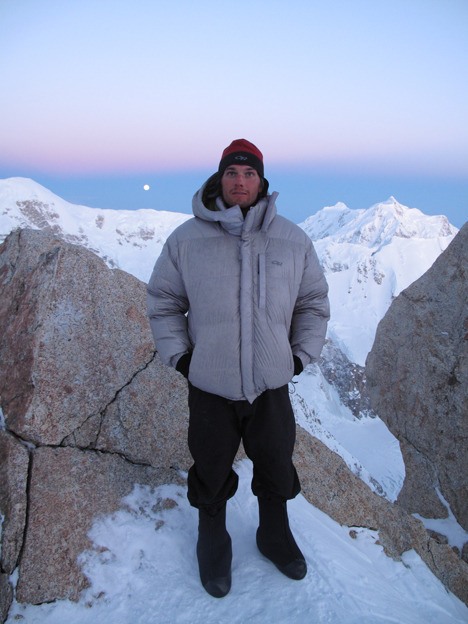Before tackling the highest peak in North America, islander Greg Ripley’s only mountaineering experience was on 2,409-foot Mt. Constitution.
Ripley described the experience as “walking into the unknown”.
“This has been a dream of mine, to climb this mountain, ever since I was a child,” he said.
When he heard that his uncle, musician Marty Raney, was taking a team to attempt the summit, he wanted in.
He said most climbers train for two years for 20,320-foot Mt. McKinley, called “the Great One”. Ripley, a hardcore marathoner, spent six intense weeks tearing up Constitution trails in preparation.
“It was a total hurricane collecting all my gear,” he said.
A few days later he was standing at an elevation of 14,200 feet, looking over the 5,000-foot sheer vertical drop dubbed “The Edge of the World”, backdropped by “the bluest sky I’ve ever seen in my life”.
The team had some close calls, and Ripley is bursting with stories to tell.
To begin their trek, “Team Magpie” was air lifted to the Kahiltna Glacier, at 7,200 feet. Using snowshoes, crampons and ice axes, they carried 75-pound packs and dragged 100-pound sleds. The climbers barricaded their tents behind walls of snow blocks each night against temperatures that ran to -50 degrees Fahrenheit.
The team camped at 14,200-foot Camp for two weeks, waiting for clear weather to continue on to High Camp, at 17,000 feet. Ripley said 20 people crammed into the ranger tent for an impromptu jam session, playing pots, pans, and cheese graters, led by “uncle Marty” on a miniature guitar.
To reach the next camp, the team crossed a perilous ridge, not wide enough for two boots side by side.
Ripley was napping in his tent at High Camp when he heard the low rumble of an avalanche. Peeking out of his tent, he saw a 200-foot high cloud of snow rumbling straight for the camp. All 150 people at the camp ran for their lives across the crevasse field; Ripley was trapped inside his tent with a stuck zipper until he finally tore free and dived through the small opening, racing for his life. The perilous flow petered out a mere 100 feet from the camp, and for the next half hour the kicked-up snow floated down over the camp.
On a crystal-clear day, they attempted the summit.
Just 600 feet from the peak, Ripley happened to look back.
“The whole back side of the mountain became black,” he said. “There were giant thunder dome clouds and 45-50 mph winds.” In five minutes, a lenticular cloud had swept upon them in full-scale whiteout.
“When you’re faced with living, or not, you really dig down really deep into an internal well to find what you really need,” said Ripley. With painstaking slowness, the climbers safely made the descent through the swirling snow.
At the Denali National Park ranger station is a map of the world, where climbers can place a pin on their hometown. He proudly placed the only pin on Orcas Island.
“I took the island and the strength of everybody here with me,” he said.
Islanders may remember Ripley from his role as “the Prince” in last year’s community play, “Beauty and the Beast”. He played alongside “Belle”, his real-life partner Grace McCune.
He and McCune will be releasing a professional documentary of the trip in the next few months. Watch for a photo slide show to be posted with this online article soon.



